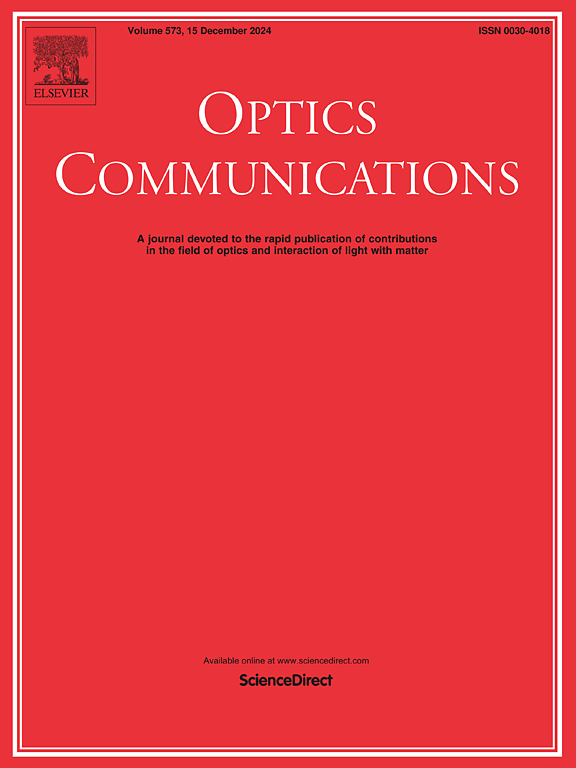用于抗湍流自由空间光通信的 6 模式前置放大器
IF 2.2
3区 物理与天体物理
Q2 OPTICS
引用次数: 0
摘要
具有高增益和高耦合效率的少模前置放大器适用于抗湍流自由空间光学(FSO)通信。在此,我们首次制造并实验演示了一种前向和纤芯泵浦的 6 模(6 M)前置放大器。通过优化 6 M 掺铒光纤(EDF)的长度,我们实现了超过 28 dB 的增益和小于 7 dB 的噪声系数(输入强度为 -30 dBm)。此外,我们还利用自制的可调谐湍流模拟器对 6 M 前置放大器的 2.5 Gbps 开关键控(OOK)信号传输进行了实验评估。与单模(SM)前置放大器相比,6 M 前置放大器在通信性能方面的优势随信道湍流条件而变化。与单模前置放大器相比,在闪烁指数σI2为0.3978和1.0553(中强湍流)的信道中,耦合效率平均分别提高了4.5分贝和5.8分贝,通信系统的误码率中值分别提高了2个和5个数量级。本文章由计算机程序翻译,如有差异,请以英文原文为准。
A 6-mode pre-amplifier for turbulence-resistant free-space optical communication
A few-mode pre-amplifier with high gain and high coupling efficiency was suitable for the turbulence-resistant free-space optical (FSO) communication. Here, we first built and experimentally demonstrated a forward- and core-pumped 6-mode (6 M) pre-amplifier. By optimizing the 6 M erbium-doped fiber (EDF) length, we achieved over 28 dB of gain and a noise figure of less than 7 dB with an input intensity of −30 dBm. Moreover, we experimentally evaluated the 6 M pre-amplifier of 2.5 Gbps On-Off Keying (OOK) signal transmission with a homemade tunable turbulence emulator. The advantages of the 6 M pre-amplifier over the single-mode (SM) pre-amplifier varied with channel turbulence conditions in terms of communication performances. Compared with the SM pre-amplifier, the coupling efficiencies increased by 4.5 dB and 5.8 dB on average, and the median bit error rates (BERs) of the communication system improved by 2 and 5 orders of magnitude, respectively, in the presence of channels with the scintillation index of 0.3978 and 1.0553 (moderate to strong turbulence).
求助全文
通过发布文献求助,成功后即可免费获取论文全文。
去求助
来源期刊

Optics Communications
物理-光学
CiteScore
5.10
自引率
8.30%
发文量
681
审稿时长
38 days
期刊介绍:
Optics Communications invites original and timely contributions containing new results in various fields of optics and photonics. The journal considers theoretical and experimental research in areas ranging from the fundamental properties of light to technological applications. Topics covered include classical and quantum optics, optical physics and light-matter interactions, lasers, imaging, guided-wave optics and optical information processing. Manuscripts should offer clear evidence of novelty and significance. Papers concentrating on mathematical and computational issues, with limited connection to optics, are not suitable for publication in the Journal. Similarly, small technical advances, or papers concerned only with engineering applications or issues of materials science fall outside the journal scope.
 求助内容:
求助内容: 应助结果提醒方式:
应助结果提醒方式:


